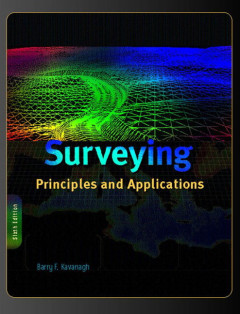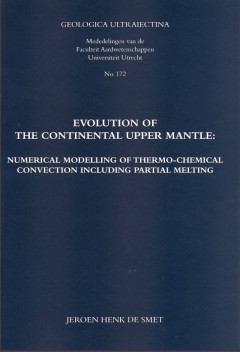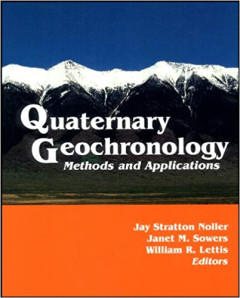Ditapis dengan
Ditemukan 730 dari pencarian Anda melalui kata kunci: location=Balai Besar Survei da...

Marine Geochemistry
Part II considers the oceans as a reservoir, introducing water-column parameters before discussing water-column fluxes and the benthic boundary layer. Part III is devoted to the sediment reservoir. The topics covered include diagenesis, the major components of the sediments, and the processes controlling the geochemistry of oceanic deposit, which ar…
- Edisi
- 2nd Edition
- ISBN/ISSN
- 1405101725
- Deskripsi Fisik
- -
- Judul Seri
- -
- No. Panggil
- BSL 550.46.01

Surveying : Principles and Applications
This manual presents a clear discussion of surveying principles, and applications for mapping and engineering surveys. It has a good selection of problems that illuminate and reinforce concepts, as well as providing up-to-date information on the latest technological innovations. Real-world emphasis is key to the continued success of this volume and …
- Edisi
- 6th Edition
- ISBN/ISSN
- 978-0130995827
- Deskripsi Fisik
- 19.05 x 3.18 x 23.5 cm, 756 p
- Judul Seri
- -
- No. Panggil
- BSL 528 KAV s

Evolution of the Continental Upper Mantle : Numerical Modelling of Thermo-che…
This thesis elaborates on the evolution of the continental upper mantle based on numerical modelling results. The descriptive and explanatory basis is formed by a numerical thermo-chemical convection model. The model evolution starts in the early Archaean about 4 billion years ago. The model follows from the conservation equations, which are based o…
- Edisi
- 172
- ISBN/ISSN
- 90-5744-029-6
- Deskripsi Fisik
- pp. 1 - 137
- Judul Seri
- Geologica Ultraiectina
- No. Panggil
- BSL 551.24 SME e

Unravelling the Magnetic Record in Marine and Continental Sediments : Climati…
Magnetic iron oxides and iron sulfides are present as trace constituents in sediments. These magnetic particles can carry a natural remanent magnetisation (NRM). When the sediment consolidates and lithifies after deposition, the direction of the then ambient field is preserved. The amount of magnetic material is often related to climate. Moreover, t…
- Edisi
- 210
- ISBN/ISSN
- 90-5744-067-9
- Deskripsi Fisik
- -
- Judul Seri
- Geologica Ultraiectina
- No. Panggil
- BSL 550.838(043) KRU u

The Geological Modelling of Hydrocarbon Reservoirs and Outcrop Analogues
The Geological Modelling of Hydrocarbon Reservoirs and Outcrop Analogues is a collection of 15 selected papers taken from the Symposium of the same name which formed part of the IAS Congress of 1990 held in Nottingham, UK. Recent technological advances and the ever increasing demand for maximising recovery from existing oil and gas fields has led to…
- Edisi
- 15
- ISBN/ISSN
- 0-632-03392-4
- Deskripsi Fisik
- -
- Judul Seri
- Special Publication of the International Association of Sedimentologists
- No. Panggil
- BSL 550.8 GEO g

ROCK MAGNETIC CYCLOSTRATIGRAPHY
- Edisi
- -
- ISBN/ISSN
- -
- Deskripsi Fisik
- -
- Judul Seri
- -
- No. Panggil
- BSL 550.384 KOD r
- Edisi
- -
- ISBN/ISSN
- -
- Deskripsi Fisik
- -
- Judul Seri
- -
- No. Panggil
- BSL 550.384 KOD r

Quaternary Geochronology : Methods and Applications
Published by the American Geophysical Union as part of the AGU Reference Shelf Series, Volume 4.rnrnQuaternary geochronology is the field devoted to dating Earth's history of the past 1.8 million years, the Quaternary Period. The field has come a long way since its early formulations at the beginning of the 20th century and the advent of radiocarbon…
- Edisi
- 4
- ISBN/ISSN
- 978-1-118-66848-1
- Deskripsi Fisik
- -
- Judul Seri
- AGU Reference Shelf
- No. Panggil
- BSL 550.9 QUA g

Geochemical anomaly and mineral prospectivity mapping in gis
- Edisi
- -
- ISBN/ISSN
- -
- Deskripsi Fisik
- -
- Judul Seri
- -
- No. Panggil
- BSL 550.84 CAR g
- Edisi
- -
- ISBN/ISSN
- -
- Deskripsi Fisik
- -
- Judul Seri
- -
- No. Panggil
- BSL 550.84 CAR g

The Earth and its Oceans
- Edisi
- -
- ISBN/ISSN
- -
- Deskripsi Fisik
- -
- Judul Seri
- -
- No. Panggil
- BSL 551.46 DUX e
- Edisi
- -
- ISBN/ISSN
- -
- Deskripsi Fisik
- -
- Judul Seri
- -
- No. Panggil
- BSL 551.46 DUX e

Laporan akhir penelitian gas Biogenik cekungan Waipoga Papua Tahun.2018
- Edisi
- -
- ISBN/ISSN
- -
- Deskripsi Fisik
- -
- Judul Seri
- -
- No. Panggil
- BSL LK 18-1
- Edisi
- -
- ISBN/ISSN
- -
- Deskripsi Fisik
- -
- Judul Seri
- -
- No. Panggil
- BSL LK 18-1
 Karya Umum
Karya Umum  Filsafat
Filsafat  Agama
Agama  Ilmu-ilmu Sosial
Ilmu-ilmu Sosial  Bahasa
Bahasa  Ilmu-ilmu Murni
Ilmu-ilmu Murni  Ilmu-ilmu Terapan
Ilmu-ilmu Terapan  Kesenian, Hiburan, dan Olahraga
Kesenian, Hiburan, dan Olahraga  Kesusastraan
Kesusastraan  Geografi dan Sejarah
Geografi dan Sejarah